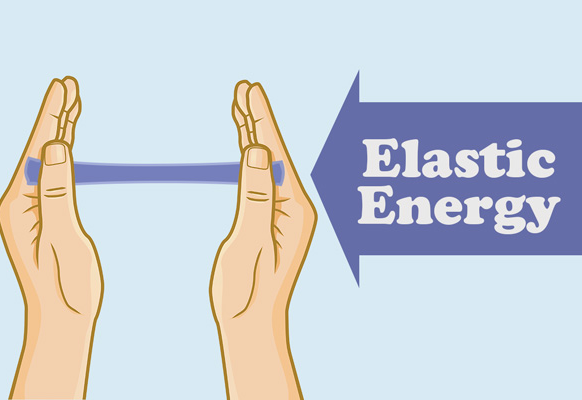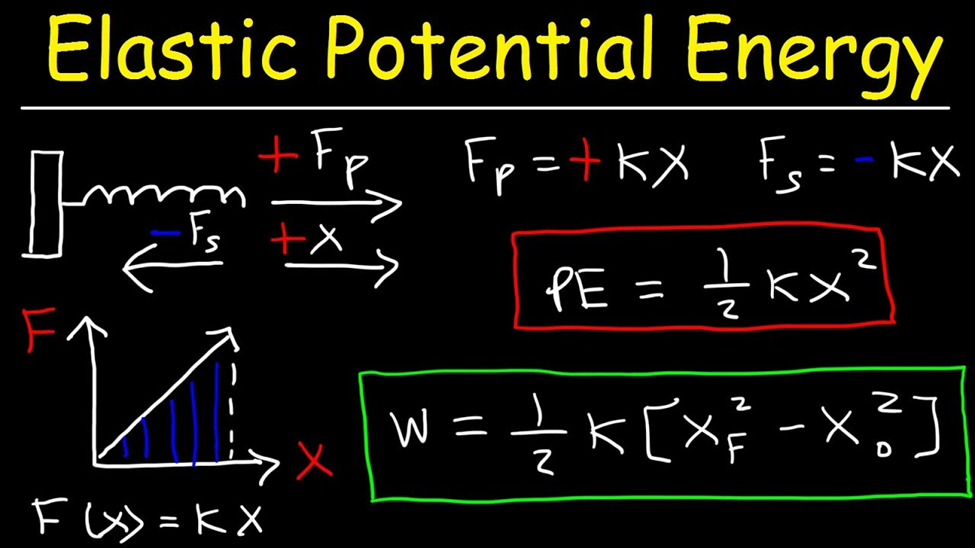The elastic energy is the mechanical potential energy that is stored in the configuration of the physical system or the material due to the work on the materials, they are subjected to the deformations. Elastic energy occurs due to impermanent stretching or compression of the materials. Primarily, the formalism is developed by the elastic theory, for the mechanics of the solid materials and the bodies. The equation of the elastic potential energy is used for the calculation of the positions of the mechanical equilibrium. This energy is potential energy, as later on this will be converted to the other energy forms.

The formula of Elastic Energy
Elastic potential energy = Force x Distance of Displacement.
W = Fs
Here, W stands for the elastic potential energy that is measured in the Joules. F is used for indicating the force that is measured in the Newtons. Whereas, S shows the displacement. The elastic energy of a substance or within the substance is the static energy of the configuration. It corresponds to the principally stored energy by causing the changes in the interatomic distances between the different nuclei.

Where Elastic Energy is Stored
The elastic energy is one of the forms of the potential energy as it is stored in the bonds between the atoms of the substance or objects when the object is temporarily under the stress condition. This stress could be the result of the stretching or squashing of the object. During the stressed conditions, the elastic energy is stored by the bonds, and upon returning to the relaxed conditions, this energy is released. For example, in the coiled system, the energy is absorbed in the compressed conditions and when the spring is relaxed back, then the energy is released.
Applications of Elastic Energy
The springs are used for storing the elastic potential energy in the various mechanical devices, such as in the shock absorbers in the vehicles. The main purpose of the shock absorbers is to reduce the devastating impact on the passengers, by absorbing the energy that is produced due to driving on the bumpy roads. Also, in the regenerative braking system, the spring potential is used which gives the small power boost to the vehicle. The elastic energy can be used in multiple ways, as the springs can remain in the stretched or compressed states, for long periods without dissipation of the energy. In the mechanical system and the control systems, the spring potential is utilized, for reducing the impact of the disturbances.